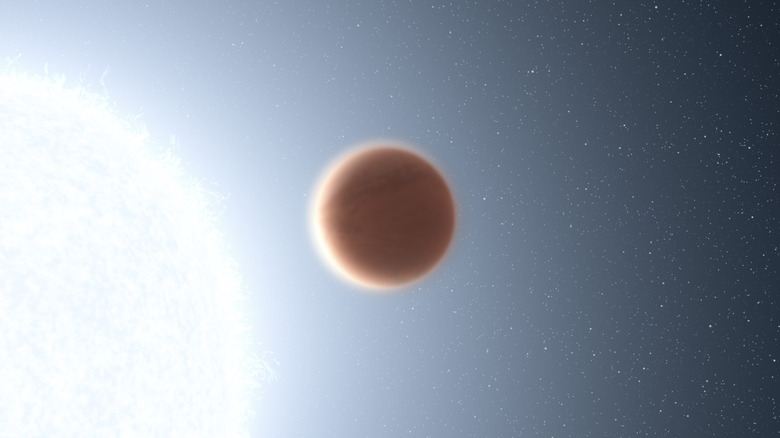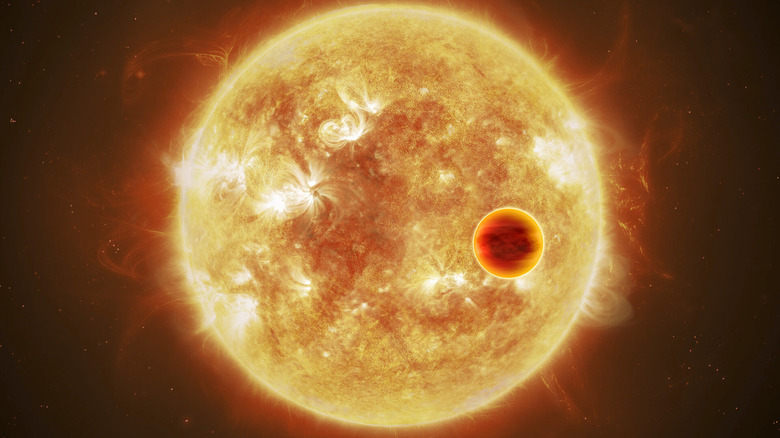This Ridiculously Hot Exoplanet Rains Rocks
Out in the depths of the universe, there exist planets that are almost incomprehensibly strange to us. Some of the wildest exoplanets yet discovered have to be a class of planets called ultra-hot Jupiters, which are gas giants similar in composition and size to Jupiter but much, much hotter. Now, two new studies using data from the Hubble Space Telescope have looked at what weather might be like on these extreme planets, and it's even weirder than you're imagining.
The two ultra-hot Jupiters being studied orbit so closely to their respective stars that they have surface temperatures of an almost unimaginable 3,000 degrees Fahrenheit and up (via Hubble). For reference, that's so hot it would boil iron and turn it into a gas. These temperatures also have some very odd effects on weather.
And while we won't be planning to move to an ultra-hot Jupiter any time soon, as they aren't exactly comfortable environments, studying them could help us understand other exoplanets, ones that could potentially support life.
"If we can't figure out what's happening on super-hot Jupiters where we have reliable solid observational data, we're not going to have a chance to figure out what's happening in weaker spectra from observing terrestrial exoplanets," said a co-author of one of the papers, Josh Lothringer. "This is a test of our techniques that allows us to build a general understanding of physical properties such as cloud formation and atmospheric structure."
A layer of metal in the atmosphere
The first planet being studied, WASP-178b, is located at a distance of around 1,300 light-years and is what is called tidally locked, meaning one side of the planet always faces the star and the other side always faces out to space. So one side gets far hotter than the other, causing super-hurricane winds that whip around the planet at over 2,000 miles per hour. The side facing the star gets so hot that no clouds can form in its sky, but there is silicon monoxide in a gaseous form in its atmosphere. However, when this silicon monoxide is blown over to the cooler side, it could condense into rocks that fall like rain.
Another recent paper looks at a different super-hot planet, KELT-20b, which is relatively closer as it is located about 400 light-years away. Strange things are afoot here, too, as the planet is being bombarded by ultraviolet light from its star which is heating up metals in the atmosphere so much they have formed a distinct thermal layer.
Such strange observations seem counter-intuitive but can tell us about the vast variety of environments we can expect to find in different exoplanets, according to David Sing, another co-author of one of the studies.
"We still don't have a good understanding of weather in different planetary environments," Sing said. "When you look at Earth, all our weather predictions are still finely tuned to what we can measure. But when you go to a distant exoplanet, you have limited predictive powers because you haven't built a general theory about how everything in an atmosphere goes together and responds to extreme conditions. Even though you know the basic chemistry and physics, you don't know how it's going to manifest in complex ways."

